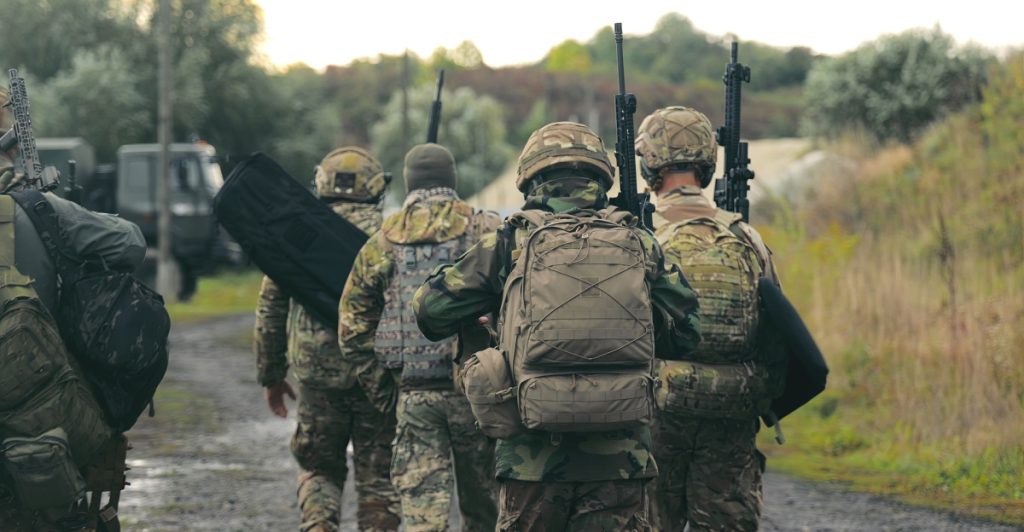After years of brutal attrition, the front lines have begun to dissolve.
Others are reading now
Nothing on the map is fixed anymore, and that has forced Kyiv to change how it fights.
Faced with constant Russian pressure and infiltration, Ukraine has devised a new strategy to regain the initiative: a seven-phase maneuver plan built to adapt to the “transparent” modern battlefield.
A war without lines
Russian troops are no longer attacking in waves but slipping into Ukrainian territory in small groups.
Unian reports that around 250 Russian soldiers have infiltrated Pokrovsk, moving in pairs or trios into areas technically under Ukrainian control.
These small teams dig in, harass defenders, and blur the idea of a fixed frontline.
Also read
Ukraine’s manpower shortages have amplified the challenge. According to Ukrainian activist Maria Berlińska, sometimes only a handful of soldiers are left to guard entire kilometres of the front.
That makes it easier for Russian units to penetrate weak points and sustain pressure through constant skirmishes.
Although Russia pays a high price in losses, this grinding pressure drains Ukraine’s strength and risks breaking the cohesion of its defensive lines. To counter it, Ukraine has built a new system: A model of warfare divided into zones and executed in seven deliberate phases.
Ukraine’s seven-phase plan
According to analysis by Jack Watling of the Royal United Services Institute (RUSI), Ukraine’s new doctrine replaces the concept of a single frontline with a layered structure.
Commanders now view the battlefield as a series of interconnected zones: a contested “gray area” around 15 kilometres wide, a middle belt stretching another 30 kilometres, and a deep rear area containing logistics and reserves.
Also read
The plan unfolds in seven phasesallowing units to isolate, dismantle, and capture enemy sectors with minimal losses.
Each operation can last up to 10 days and is repeated sector by sector to steadily reclaim ground.
Phase one: reconnaissance
The first step focuses on understanding the enemy’s network.
Ukrainian scouts and drones locate artillery batteries, air defences, electronic warfare systems, and logistics hubs.
This includes identifying enemy drone operators, resupply routes, and signal emitters. The aim is to make the invisible visible before any attack begins.
Phase two: isolation
Also read
Once the enemy layout is mapped, Ukrainian forces isolate the target area.
FPV drones hit exposed infantry and vehicles, while artillery takes out fortified points. Long-range reusable bomber drones known as “Vampires” strike supply roads and support systems.
By cutting off reinforcements and resupply, Ukraine traps enemy troops in positions they can no longer sustain.
Phase three: degradation
After isolation, Ukrainian units begin to degrade enemy strength through direct strikes.
Thermal detectors and communication intercepts identify command posts, ammunition depots, and key weapons.
Also read
These are systematically targeted to paralyze coordination. It’s a gradual wearing down of the enemy’s capacity to respond.
Phase four: targeting
This phase floods the area with FPV drones to lock the enemy in place.
Drones hover constantly over positions, stopping Russian soldiers from moving or regrouping.
The purpose is psychological as much as tactical, to freeze defenders and deny them initiative. By this point, the battle becomes a contest of endurance, not territory.
Phase five: suppression
Once movement stops, artillery and rocket strikes intensify. Conventional guns, though old-fashioned, deliver heavy firepower capable of breaking fortified points.
Also read
Operations are timed to coincide with poor visibility or thermal interference, when Russian drones are least effective.
This combination of drone saturation and heavy fire clears the path for the next advance.
Phase six: lock and destroy
With the defenders weakened, mechanized units move in.
Ukrainian forces favor wheeled armored vehicles for speed and survivability, they can resist multiple drone hits and shift quickly across terrain.
These mobile formations strike isolated Russian groups, using their firepower to complete the destruction of local resistance.
Also read
It’s the only stage where close combat occurs, and only after the enemy’s structure has already collapsed.
Phase seven: consolidation
Once the area is secured, Ukrainian troops dig in.
Instead of returning to old, exposed trenches, they build fresh strongpoints deeper in the newly captured “gray zone.”
Mines laid earlier serve as protection against counterattacks, while drones monitor the approaches.
Fresh units then rotate in to prepare the next operation — repeating the same seven-phase cycle across the front.
Turning adaptation into advantage
Also read
This new model of warfare is a significant shift in Ukraine’s strategy.
Rather than relying on large, coordinated offensives that invite heavy losses, the plan emphasizes tempo, precision, and local control.
Watling’s analysis suggests that when the sequence is executed correctly, attacker losses fall to just 5–10 percent, compared with up to 50 percent in conventional assaults.
The seven-phase system does not eliminate tanks or artillery but integrates them differently, as part of a flexible, intelligence-driven approach.
By blending drones, data, and old-fashioned firepower, Ukraine hopes to offset manpower shortages and counter Russia’s constant infiltration.
Also read
It’s a strategy born of necessity, reflecting a war where every move is watched, every mistake punished, and survival depends on staying unseen until it’s too late for the enemy to react.
Sources: Unian; RUSI (Jack Watling), Portal O’bronny.
This article is made and published by Kathrine Frich, who may have used AI in the preparation


